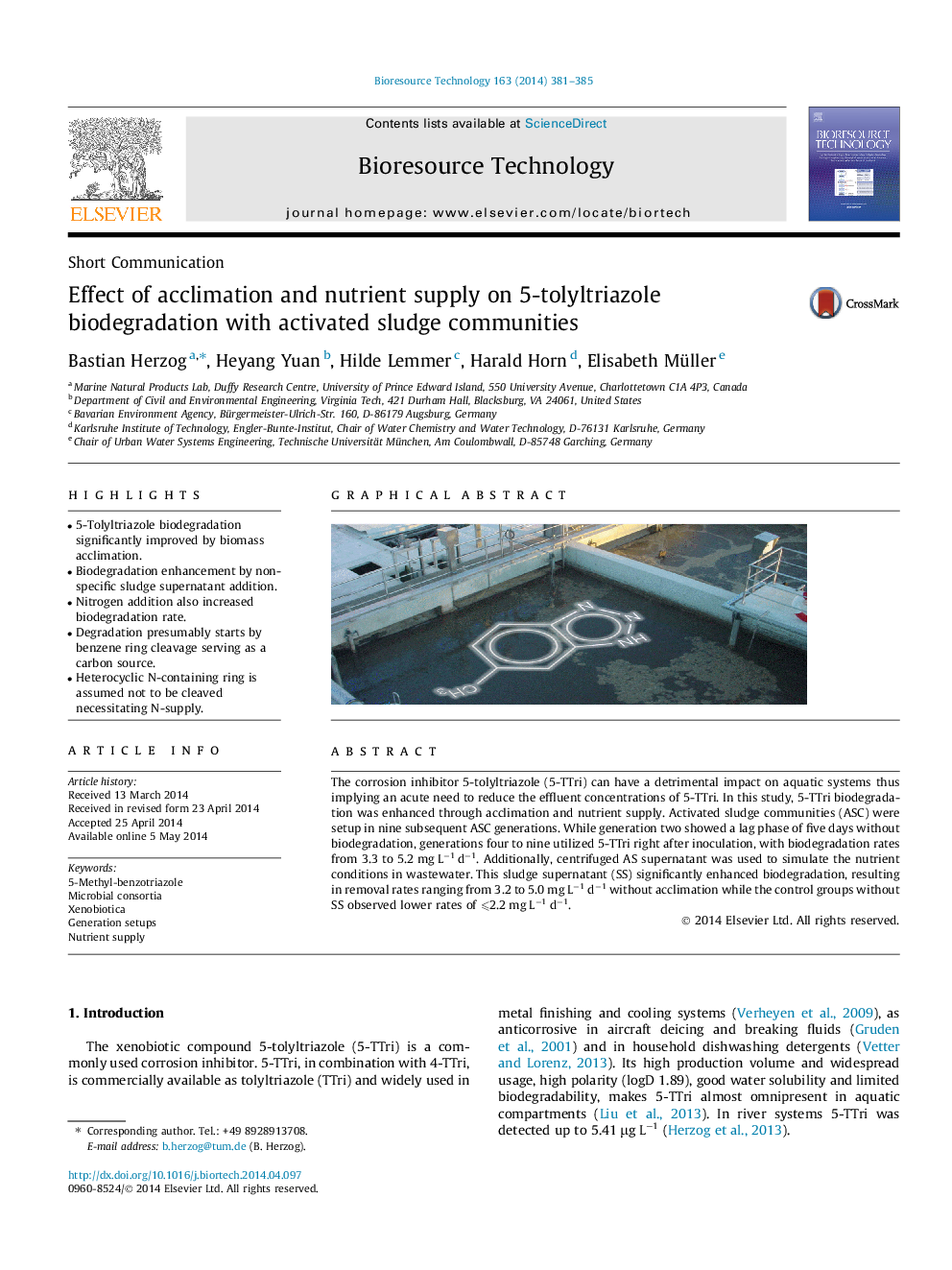| کد مقاله | کد نشریه | سال انتشار | مقاله انگلیسی | نسخه تمام متن |
|---|---|---|---|---|
| 680895 | 1459980 | 2014 | 5 صفحه PDF | دانلود رایگان |
• 5-Tolyltriazole biodegradation significantly improved by biomass acclimation.
• Biodegradation enhancement by non-specific sludge supernatant addition.
• Nitrogen addition also increased biodegradation rate.
• Degradation presumably starts by benzene ring cleavage serving as a carbon source.
• Heterocyclic N-containing ring is assumed not to be cleaved necessitating N-supply.
The corrosion inhibitor 5-tolyltriazole (5-TTri) can have a detrimental impact on aquatic systems thus implying an acute need to reduce the effluent concentrations of 5-TTri. In this study, 5-TTri biodegradation was enhanced through acclimation and nutrient supply. Activated sludge communities (ASC) were setup in nine subsequent ASC generations. While generation two showed a lag phase of five days without biodegradation, generations four to nine utilized 5-TTri right after inoculation, with biodegradation rates from 3.3 to 5.2 mg L−1 d−1. Additionally, centrifuged AS supernatant was used to simulate the nutrient conditions in wastewater. This sludge supernatant (SS) significantly enhanced biodegradation, resulting in removal rates ranging from 3.2 to 5.0 mg L−1 d−1 without acclimation while the control groups without SS observed lower rates of ⩽2.2 mg L−1 d−1.
Figure optionsDownload as PowerPoint slide
Journal: Bioresource Technology - Volume 163, July 2014, Pages 381–385
